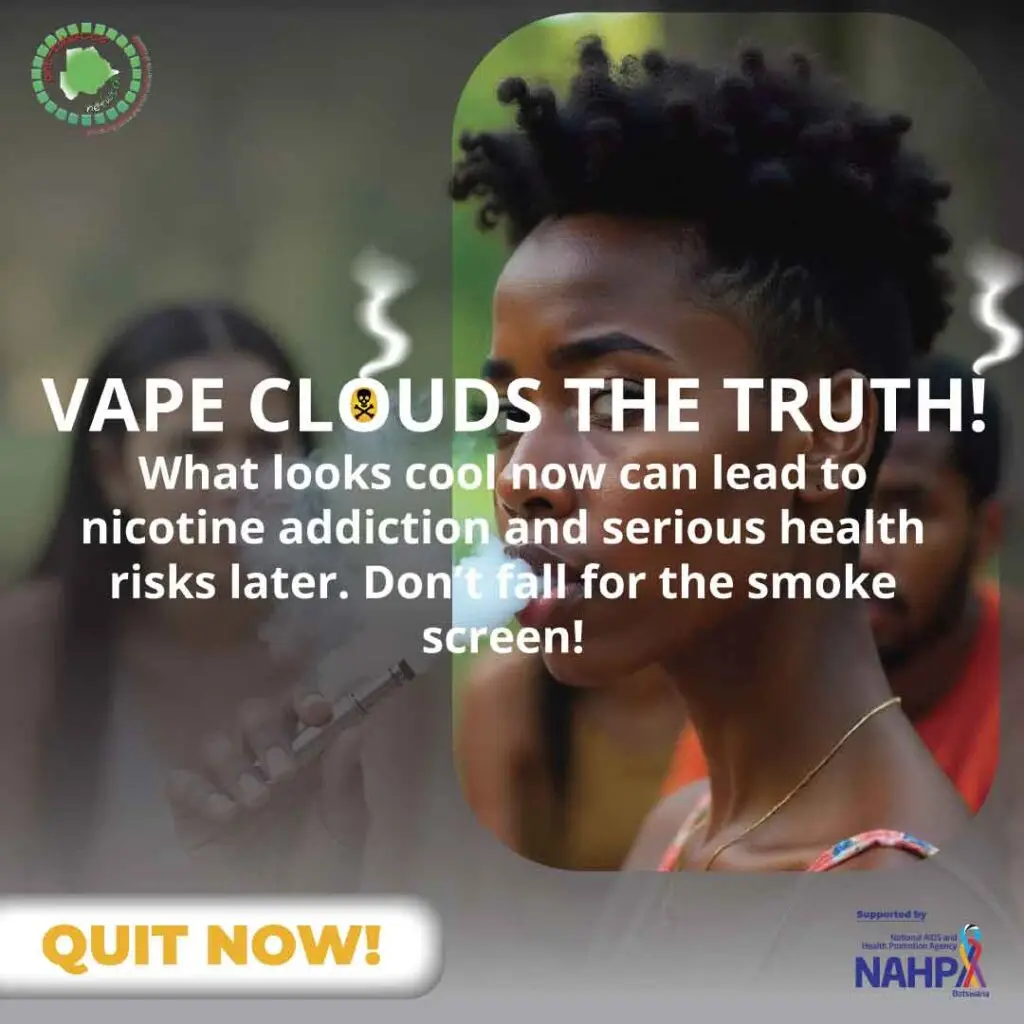VAPING DANGER
In recent years, vaping has emerged as a growing trend in Botswana, particularly among the youth. This shift has brought with it significant health concerns and questions about regulatory oversight.
To unpack the issue, we spoke with Thabo Katlholo, the Programmes Manager at the Anti-Tobacco Network (ATN), who shed light on vaping’s health risks, accessibility and the public perception fuelling its rise.
Vaping, often marketed as a safer alternative to smoking, is not without significant health risks. Katlholo highlighted that vaping can cause lung irritation, inflammation, and in severe cases, lead to conditions such as E-cigarette or Vaping Product Use-Associated Lung Injury (EVALI).
“The high nicotine content in many vaping products is particularly concerning, especially for young people. Nicotine addiction at an early age can have lifelong consequences, including increased dependency and the likelihood of transitioning to traditional smoking,” he explained.
While traditional cigarettes produce over 7 000 chemicals, many of which are carcinogenic, vaping devices also deliver harmful substances, including fine particles inhaled into the lungs. Katlholo cautioned that while vaping may expose users to fewer toxins, it is far from harmless.
He noted that vaping has gained traction among Botswana’s youth due to targeted marketing, the appeal of flavoured e-liquids, and the perception of vaping as a trendy and safer alternative to smoking.
“Social media plays a significant role in glamorising vaping. Influencers and viral content normalise the habit, making it appear socially acceptable and aspirational,” he said.
Flavoured e-liquids, often sweet and fruity, are particularly appealing to young people. These products mask the harmful chemicals present in e-cigarettes, creating a false sense of safety.
Despite the Tobacco Control Act of 2021, which regulates novel tobacco products, including e-cigarettes, enforcement remains a challenge. The Act prohibits the sale of vaping products to minors, bans advertising and promotions, and restricts public use in designated non-smoking areas. However, Katlholo emphasised that illegal imports and unregulated online sales have made these products easily accessible.
“Many vendors, particularly in informal markets and online platforms, bypass the law, selling these products to minors and failing to meet safety standards. Public awareness about these regulations is still limited,” he said, adding that advertising and social media have amplified the vaping trend among young people.
Katlholo further pointed out that despite the Act’s ban on direct advertising, loopholes in enforcement allow for subtle promotions through event sponsorships and influencer marketing.
“Flavoured products and sleek designs are heavily marketed to appeal to younger audiences. Social media challenges and viral videos further entrench vaping as a popular activity,” he added.
He stressed the need for widespread education campaigns to counter the misconceptions about vaping.
“Schools, community centres, and digital platforms should be leveraged to educate the youth about the risks of nicotine addiction and lung damage. Healthcare professionals and organisations like ATN must provide clear evidence-based information to challenge misleading marketing narratives,” he advised.
Original article published on: The Guardian: Nothing like ‘safer alternative to smoking,’ youth warned | Guardian Sun





